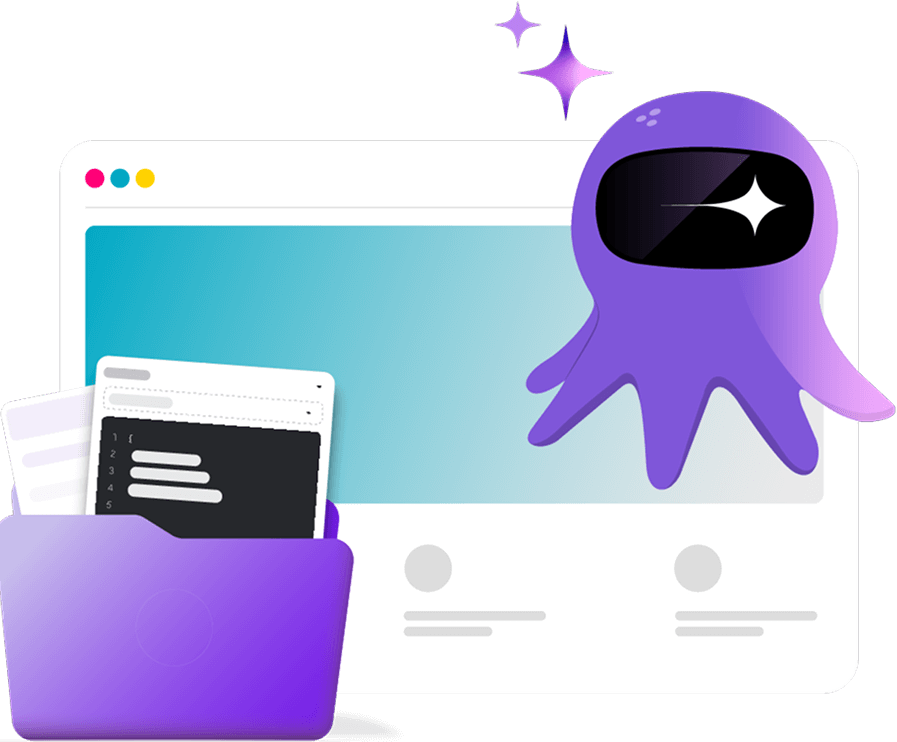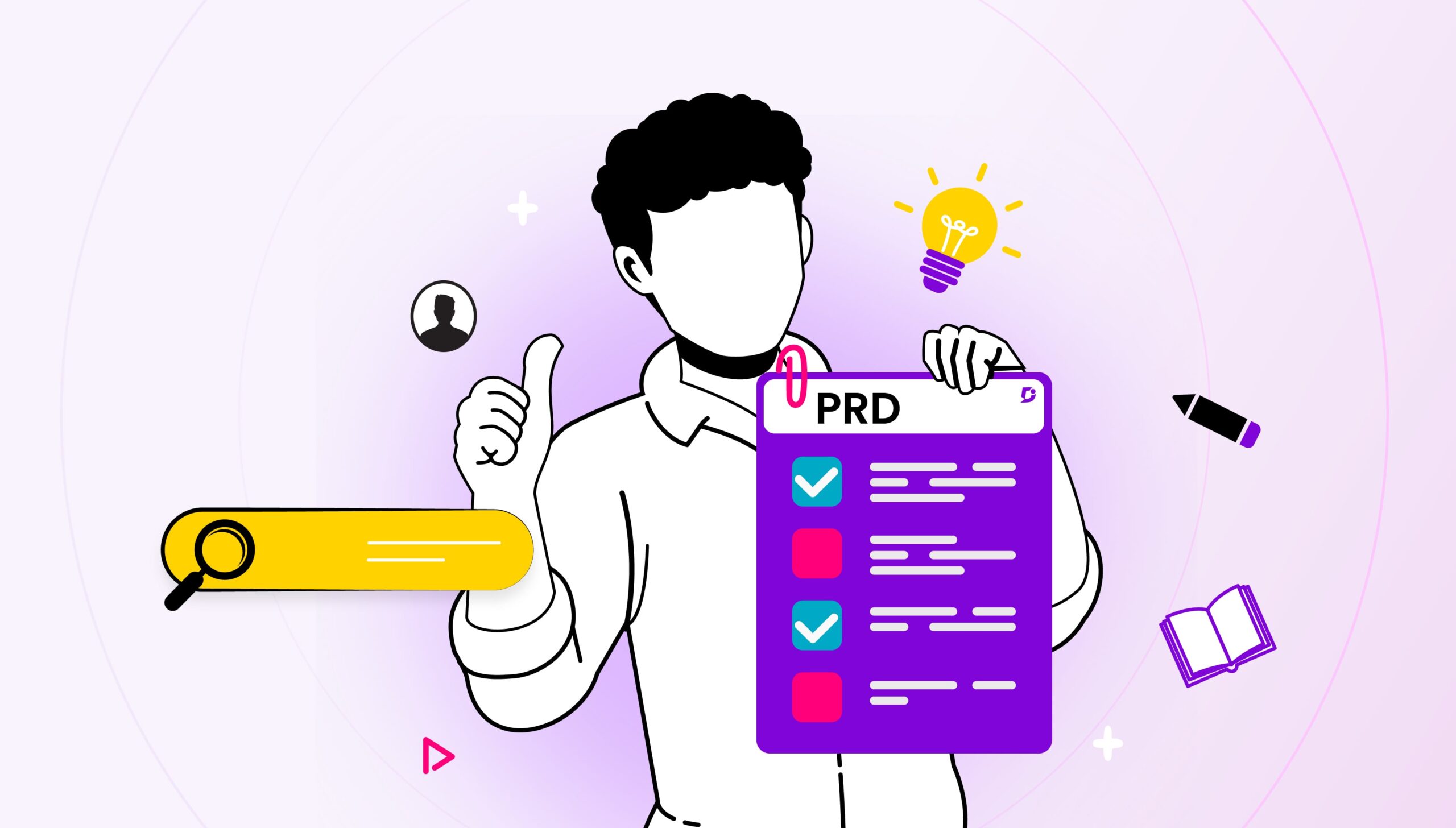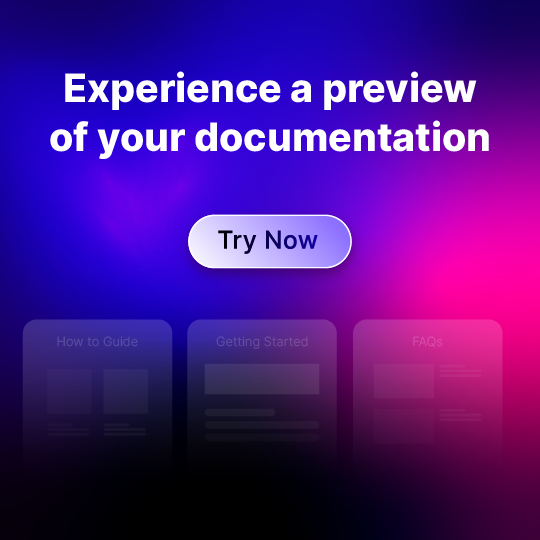Your product is the centerpiece of your company. There wouldn’t be any business for you without your product. While we are consistently making efforts to strive for product excellence, we may not always reach there. This is because product owners fail at the very roots. You may often build a product based on the basic idea you have for it. Sometimes, you may just run iterations or give feature requests to your product team.
However, you cannot just wing something that forms the crux of your business.
A country’s constitution is essential for its laws and actions. A product requirements document is necessary for product teams to develop products that gain success.
In this article, let’s talk about what a product requirements document is, tips on how you can write one, and a template as a bonus!
📝 TL;DR:
A Product Requirements Document (PRD) provides an outline of what a product should do, who it is for, and how it helps achieve the goals of the business/organization.
It helps agile teams to stick to their goals, avoid any miscommunication, and come up with a product with the right features. In this article, you will learn:
- The definition of a PRD and its purpose
- The key information included in every PRD
- Tips for writing a PRD that your team will actually use
- Things to avoid while creating a PRD
- Examples from product teams
- The most popular tools used for creating PRDs
- Frequently asked questions around PRDs
What is a Product Requirements Document (PRD)?
A Product Requirements Document (PRD) is a document used for planning and defining a product’s purpose, features, basic functionality, and expected behavior. The document is the main information source for development, design, QA, and business teams throughout the product lifecycle.
PRDs are usually written by product managers in collaboration with designers, developers, and business leaders. The goal of the PRD is to make sure everyone is aware of the product vision.
The Purpose of a PRD in Product Development
A well-written PRD plays an important role during the development of a product.
A PRD,
- Sets the expectations regarding the goals of the product intent and its priorities from the beginning
- Reduces/eliminates any confusion that could occur, especially in cross-functional teams
- Sets the priorities and manages the expectation of the entire team during product development
- Keeps track of every feature from ideation to release, providing visibility to all stakeholders
- Serves as the main source of information during product development for all teams
A PRD is critical in fast-paced agile environments to avoid any confusion and rework within teams.
PRD vs BRD vs FRD vs PDD
Understanding the various planning documents gives clarity regarding the purpose of PRDs:
- PRD vs BRD (Business Requirements Document): A BRD provides an overview of the goals of the business and stakeholder requirements. Using the information from the BRD, specific product requirements are created in the PRD.
- PRD vs FRD (Functional Requirements Document): While a PRD focuses on what the product does, an FRD focuses on the technical details, providing details regarding how the different features of the product will be implemented.
- PRD vs PDD (Product Design Document): A PDD deals with product design, mainly UI/UX design, wireframes, and how a user might interact with the product. While a PRD can include references to a PDD, the focus remains more strategic and feature-oriented.
What to Include in a Product Requirements Document
The sections listed below should be part of the PRD:
Product Overview
In the product overview section, describe the product/feature, what it does, and why it is being developed. Include a summary of the idea behind the product and the business opportunity.
Business Objectives
In this section, explain how the product enables the organization to achieve its business goals. This includes goals related to finances, engaging & retaining customers, or other strategic goals that differentiate the product from competitors.
Target users & Use cases
In this section, define the primary users of the product, along with their user personas. Include use cases that provide details on how users will interact with the product to reach their desired outcomes. Consider the example below:
- Persona: HR Manager of an organization with 100+ employees.
- Use case: Upload policy documents, share them with all employees, and keep track of acknowledgement of receipt from all employees.
Functional requirements
In this section of the PRD, list and describe the product’s features, user stories, and acceptance criteria. Once you list them, organize them in a table, sorted by priorities such as must-have, nice-to-have, or to be considered in the future. For example,
|
Feature |
Description |
Priority |
Acceptance Criteria |
|
Login |
Use 2FA for logging in securely |
Must-have |
Users log in using an OTP received over email and phone |
Non-functional requirements
While the functional requirements talk about how the product works, this section defines the product’s performance, reliability, compliance, or scalability. For example,
- The loading time of the product should be less than 2 seconds on 4 G.
- The system should be WCAG 2.1 compliant.
- Uptime should be 99.95% annually.
Success metrics
This section defines how the success of the product will be quantified. For example,
- 80% of users complete onboarding within 10 minutes.
- <2% of users do not complete the checkout flow.
- 90+ CSAT score for the new feature.
Constraints & Assumptions
In this section, list all potential technical, business, or operational issues to keep all stakeholders informed. For example,
Constraints:
- Limited engineering bandwidth for Q4.
- Backend must support multilingual content.
- Must use the authentication system already in place.
Assumptions:
- The analytics team will provide baseline usage metrics.
- Third-party APIs will remain stable and backward compatible.
- Target users will have network connectivity without any issues.
Timeline, Milestones & Rollout
In this section, provide a rough implementation plan. For example,
- Design completion: Sept 15
- Development complete: Oct 31
- Beta rollout: Nov 15
- Production release: Dec 10
Looking to manage your product documentation better? Try Document360 to draft internal PRDs, knowledge base articles, and more in one central place.
GET STARTED
How to Write a PRD that Teams Will Actually Use
The following best practices will help you draft an effective PRD:
- Start by understanding user requirements: Conduct interviews within the organization and with potential users and collect their feedback. Review previously received support tickets. Once you have all this information, start documenting the features in the PRD.
- Prioritize the features based on value: Use methods such as MoSCoW (Must, Should, Could, Won’t) or the RICE framework (Reach, Impact, Confidence, Effort).
- Use easily understandable language: Don’t use any jargon. Keep the sentences short. Use visuals or tables to help everyone understand the contents of the PRD.
- Ensure team collaboration while creating the PRD: Involve the engineering and design teams right from the first draft of the PRD. This prevents any confusion and surprises. Before finalizing the PRD, make sure to get their feedback.
- Keep the PRD lean and actionable: Only include what is needed for execution in the PRD. Provide links to detailed specs, meeting notes, and designs separately.
- Update the PRD frequently: Based on discussions, continue updating the PRD so everyone knows about any changes or updates. Consider adding versioning or changelogs so the changes are visible immediately.
Examples of sample PRDs
These are some examples based on real-world scenarios:
Fintech App Onboarding PRD
Product Goal: Reduce the time spent by users for signing up
- Flow: User registration > ID verification > First transaction
- Functional: OTP-based login, ID verification via third-party API, onboarding progress tracker
- Non-functional: Completion in <5 mins, support for SSN formats
- Success Metric: >75% onboarding completion within 10 mins
Internal Dashboard Tool PRD
Audience: Data analysts and product managers
- Role-based login and views (admin vs analyst)
- Functional: Filter by time, location, or type of product; Export CSV; Save views
- Visuals: Use graphs & charts to visualize KPIs
- Constraint: Dashboard must load within 3 seconds
SaaS Subscription Feature PRD
Goal: Enable flexible plan upgrades/downgrades
- Functional: Select plan, set billing cycle, manage credit balance
- Edge cases: Pro-rata charges, plan switches mid-cycle
- Assumptions: Billing is done using Stripe integration
- Success Metric: 30% users self-serve upgrade without support
The above examples show how a structured PRD aligns the goals of the business, the needs of users, and engineering expectations.
Common Mistakes to Avoid While Writing PRDs
When drafting a PRD, these are the most common mistakes that lead to an ineffective PRD:
- Creating a static document that is not updated as the product is developed.
- Writing a PRD without inputs from the engineering/design teams.
- Including a feature with vague descriptions, without providing context or acceptance criteria.
- Adding too much technical detail, while not providing sufficient information regarding non-functional requirements.
- Avoiding user validation or not taking feedback from users into consideration.
- Assuming that the PRD is only for product managers.
If you avoid all the above mistakes, you will have a PRD that is useful to the entire team during the product’s development.
Sample Product Requirements Document (PRD) Template
Here’s a basic structure that you and your team can use while creating your PRD:
Product Overview
- Summary of the product
- Potential business opportunity
Business Objectives
- What are the goals of the business
- What are the product’s KPIs or goals
Target Users & Use Cases
- Primary user personas
- Real-life examples and scenarios
Functional Requirements
- List of features with priority and acceptance criteria
Non-Functional Requirements
- Performance, security, compliance, and other accessibility related requirements
Success Metrics
- Clear, quantifiable success indicators
Constraints & Assumptions
- Known limitations or dependencies
Timeline, Milestones & Rollout Plan
- Estimated dates for product design, development, QA testing, and product launch
This template provides a standard structure your teams can follow, while leaving room to adapt the PRD for your product or its features.
Recommended Tools for Drafting PRDs
Choosing the appropriate tool can help you create PRDs that will be useful for your team. Some of the recommended tools are listed below:
- Document360: Ideal for creating a knowledge base internally where PRDs can be easily shared within the team & organization.
- Miro: Great for seeing user journeys, workflows as visuals, and brainstorming feature maps. Helpful in early planning stages.
- Confluence: Supports agile documentation with templates, version control, and team collaboration. Integrates well with Jira.
- Notion/Google Docs: Easy to customize and collaborate on PRD templates. Best for lightweight teams.
- Productboard: Connects feedback from customers directly to product features. Requirements can be prioritized based on customer insights.
Also, explore other tools that support your product management documentation process.
Final Takeaways
A Product Requirements Document isn’t just a formality. It is the foundation while building a product. If done correctly, it:
- Brings clarity to what you’re building and why
- Aligns your team around common priorities
- Reduces confusion, rework, and feature creep
Whether you are part of a new product team or an experienced one, writing a clear and easy-to-understand PRD is an effective way to keep your product on track.





 –
– 

